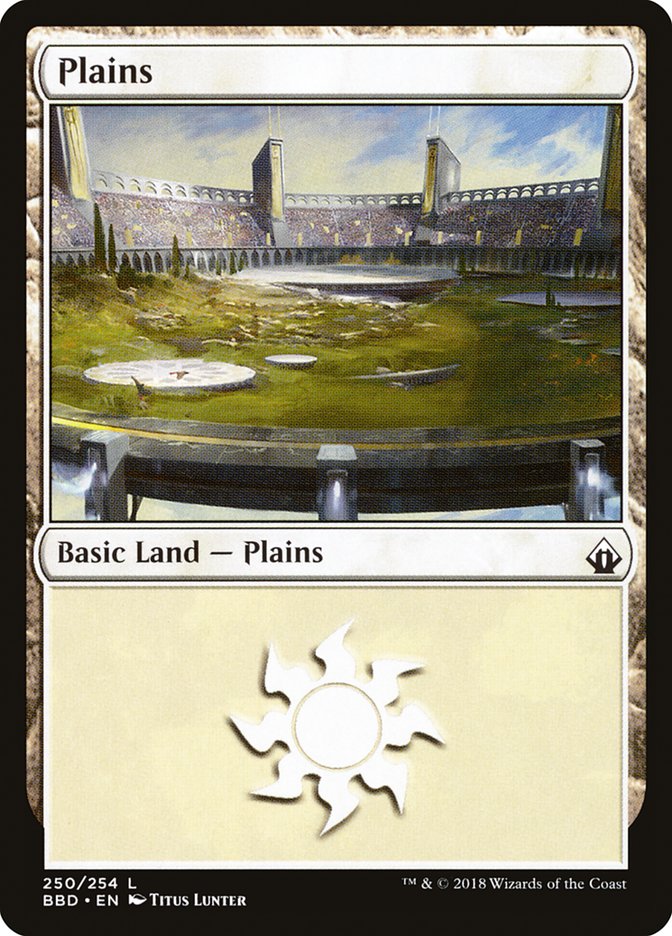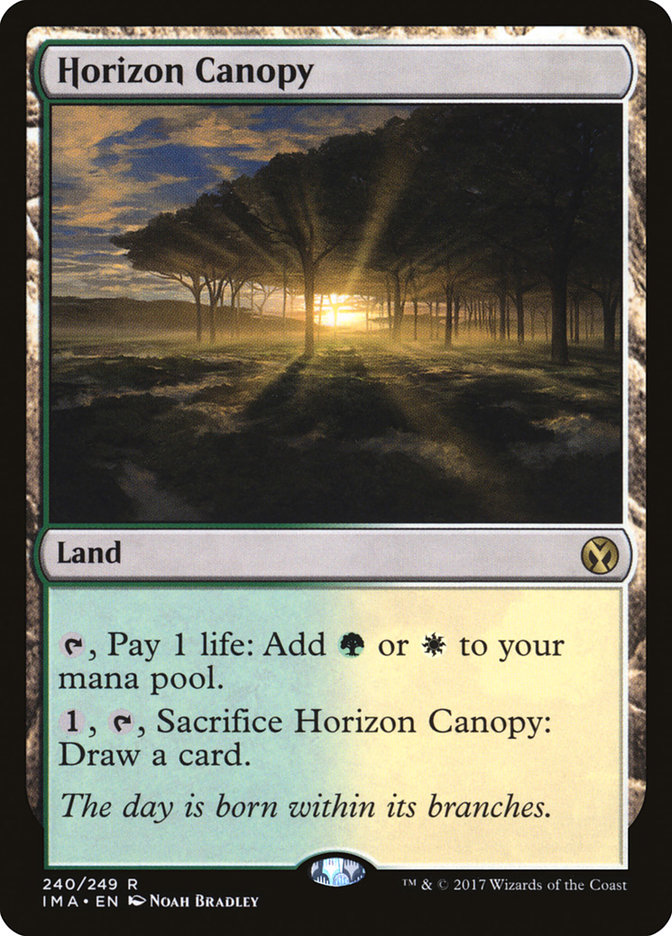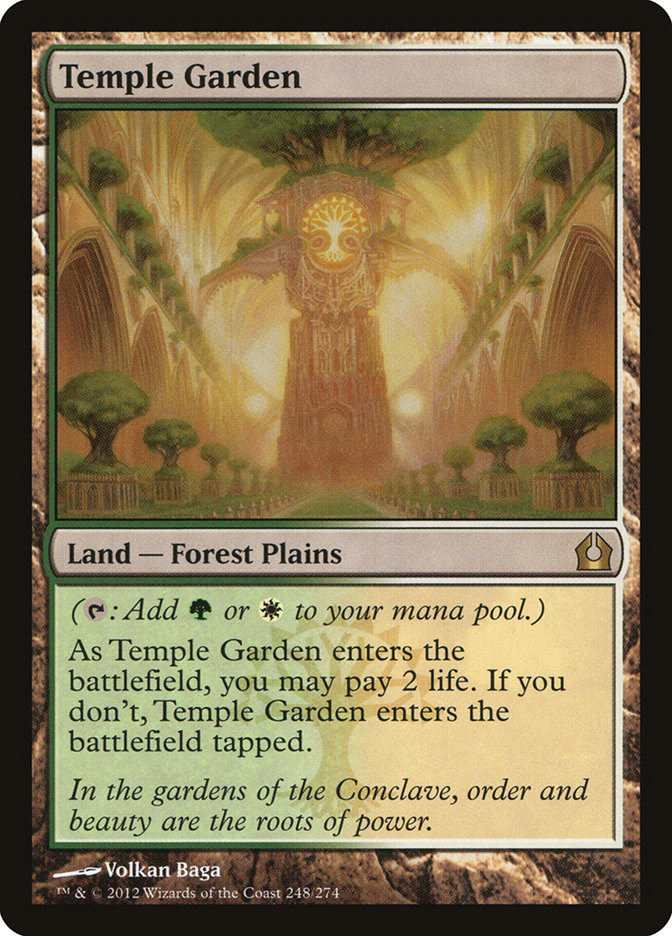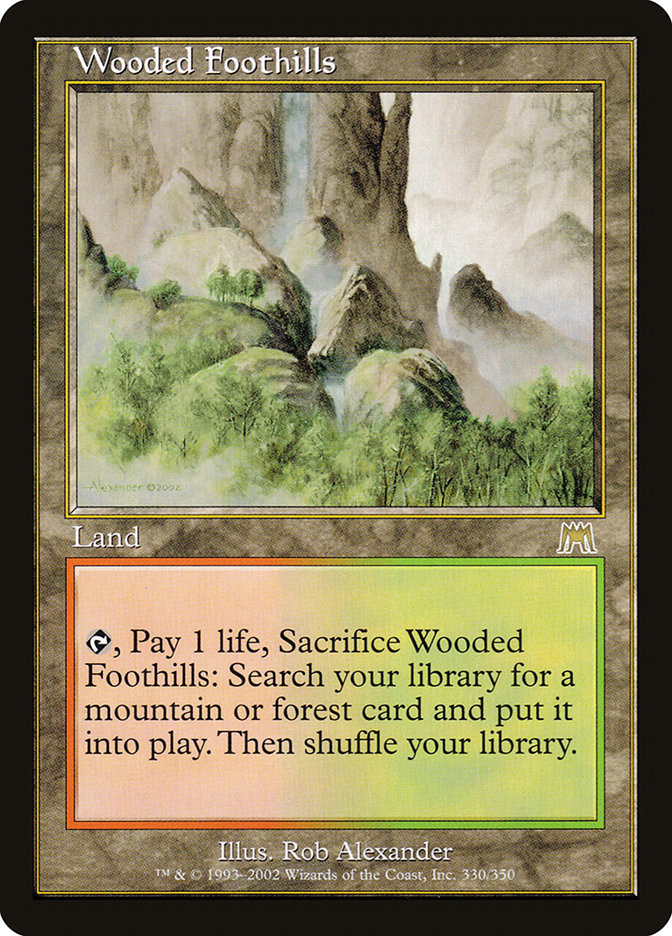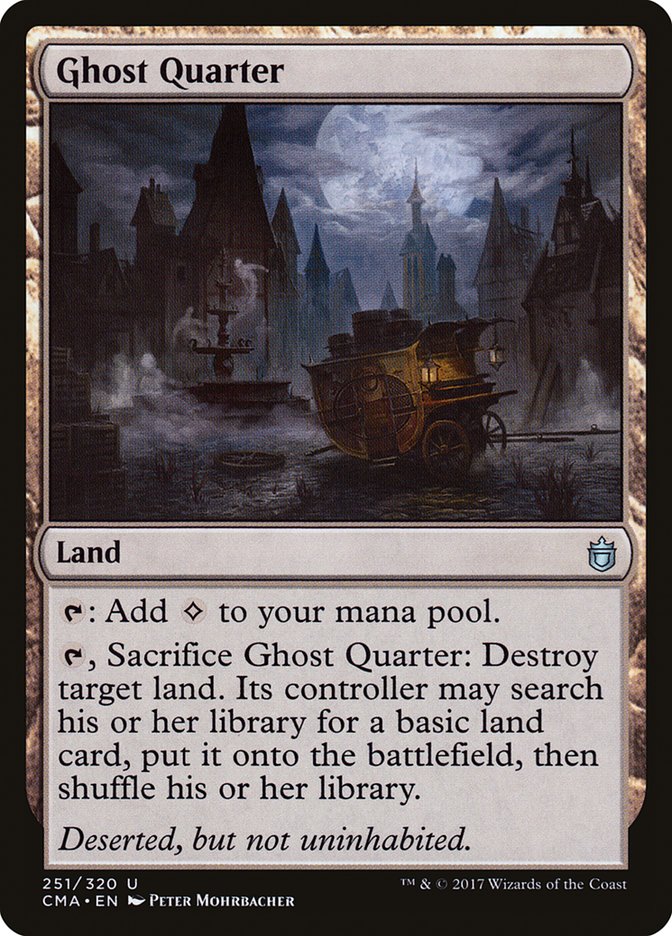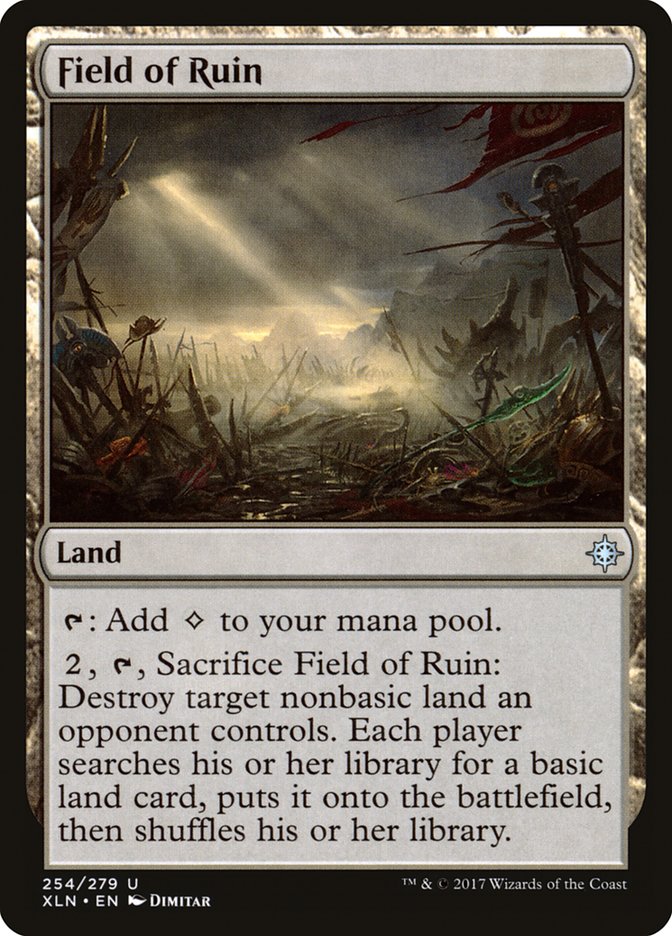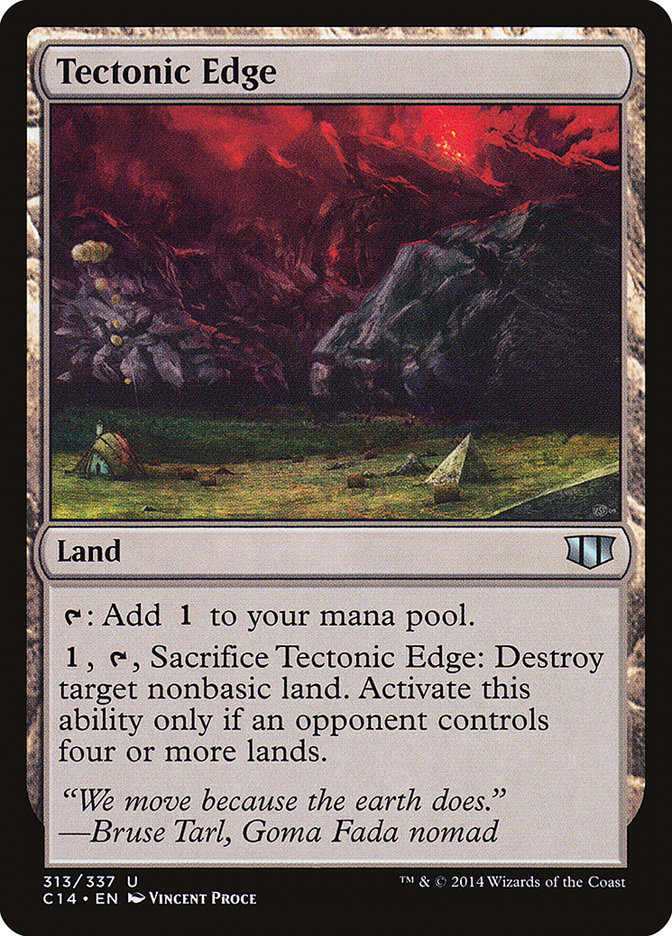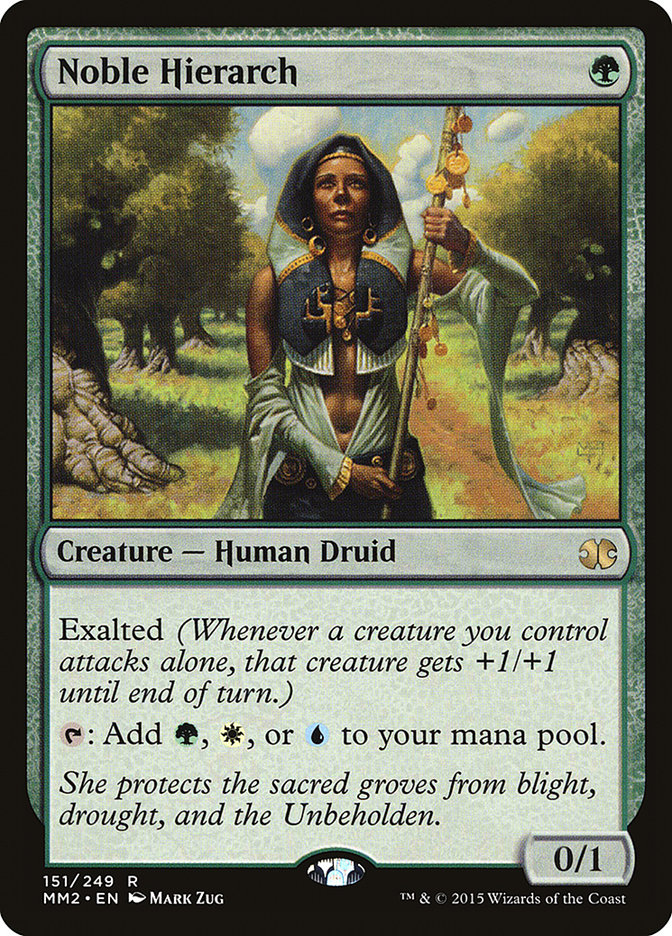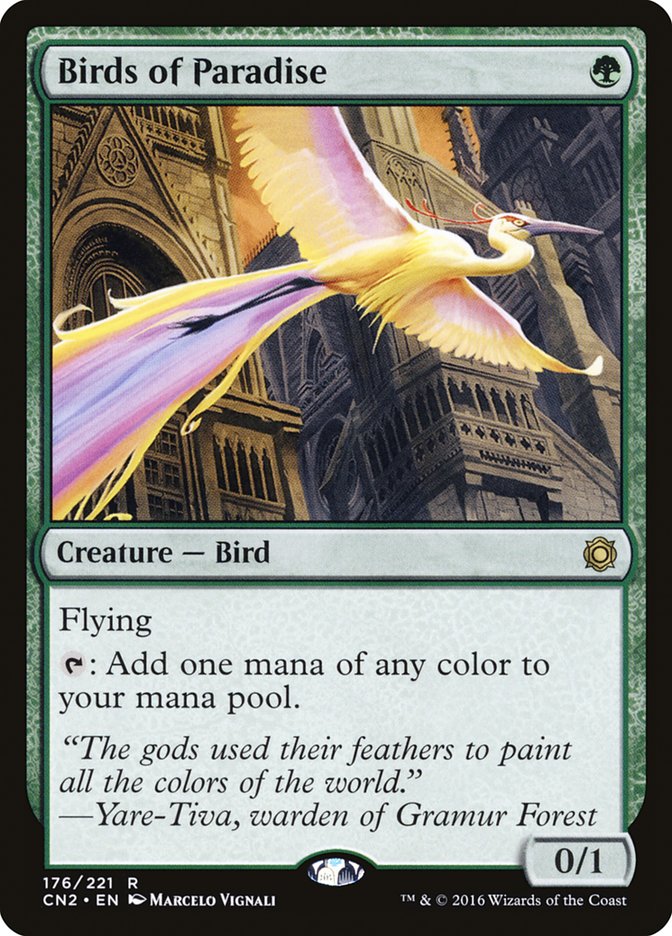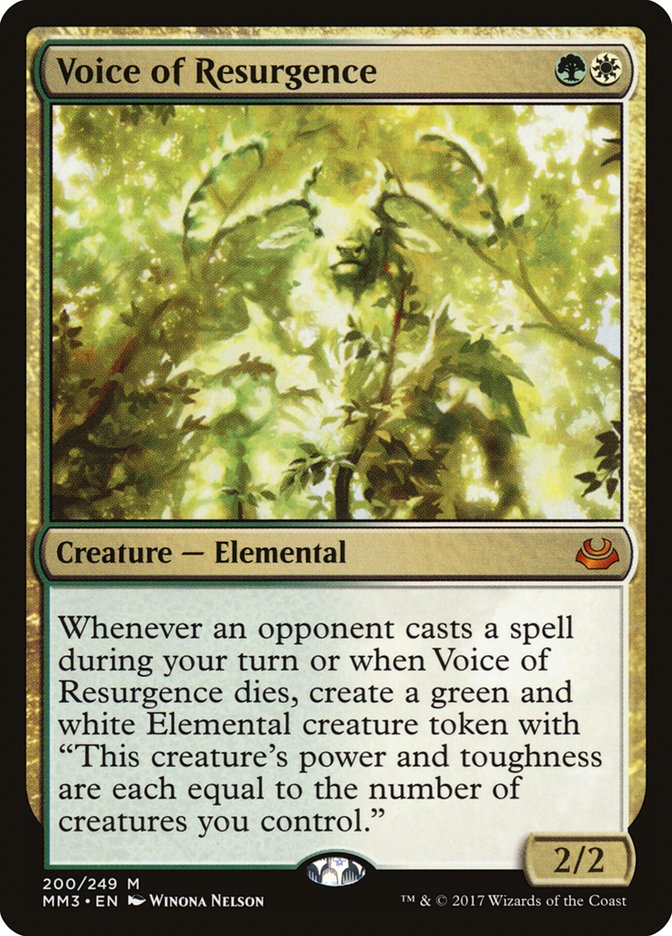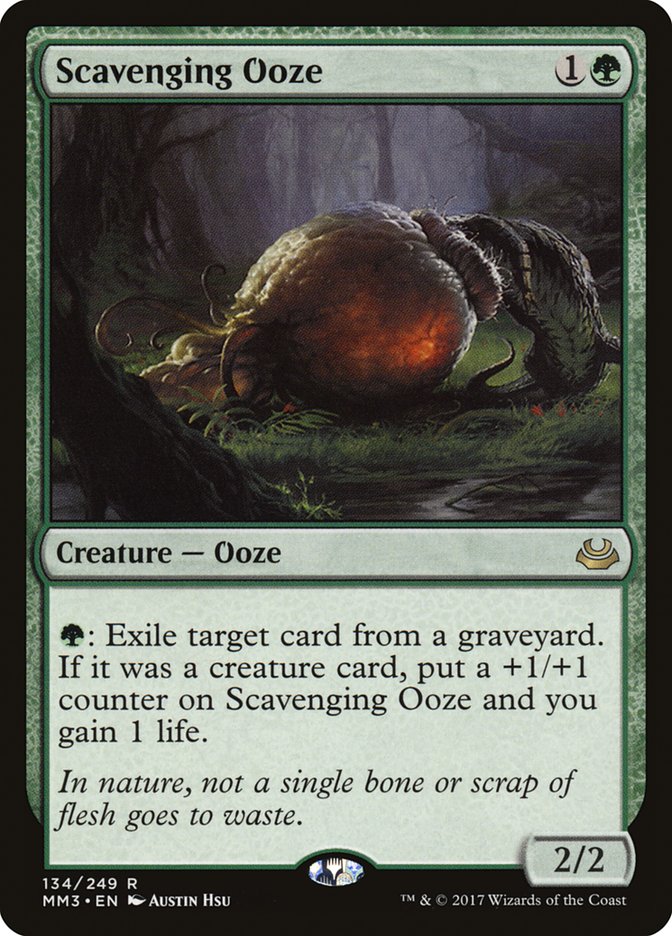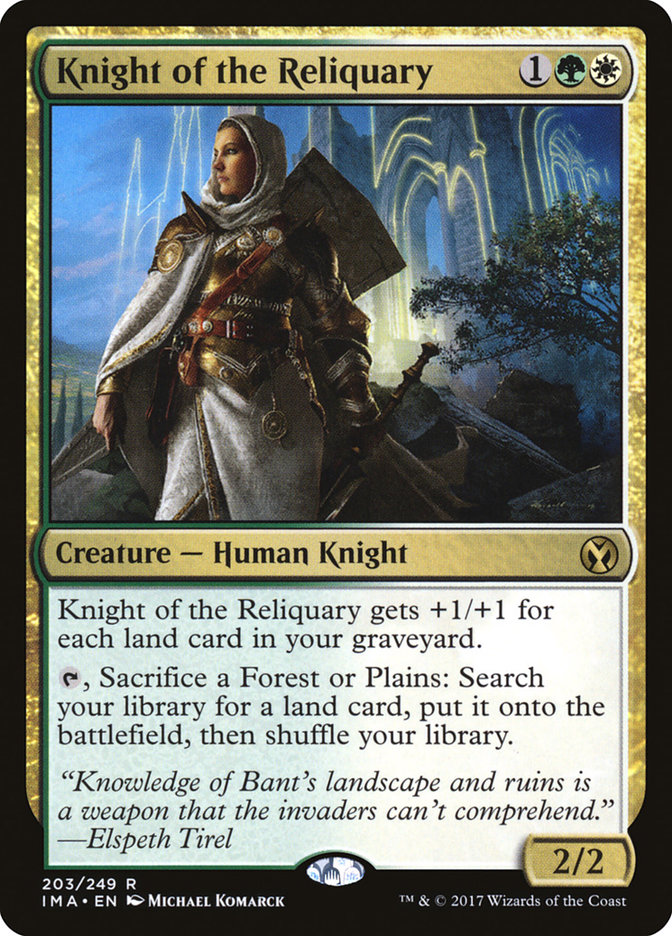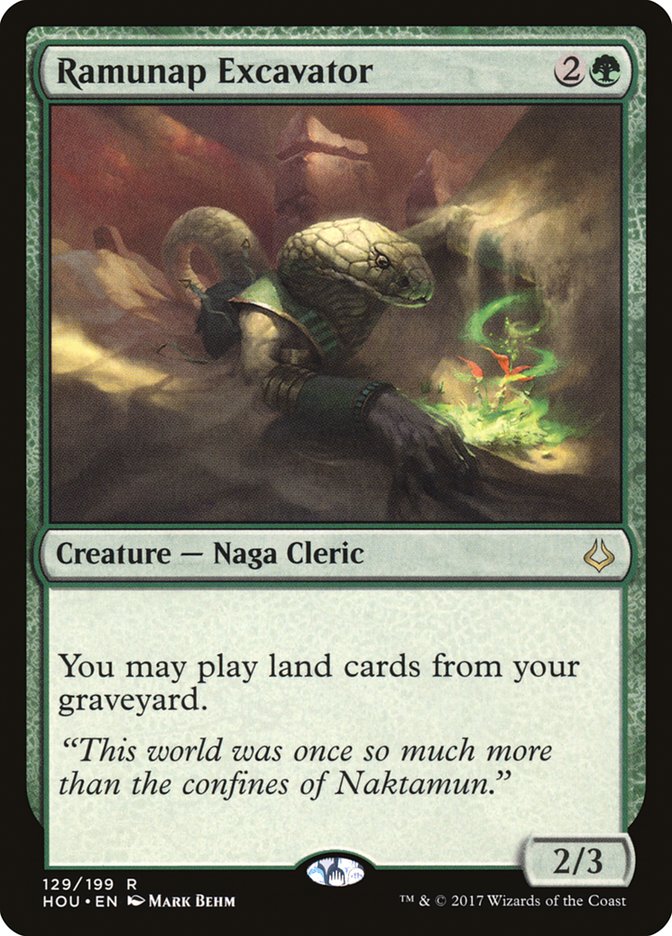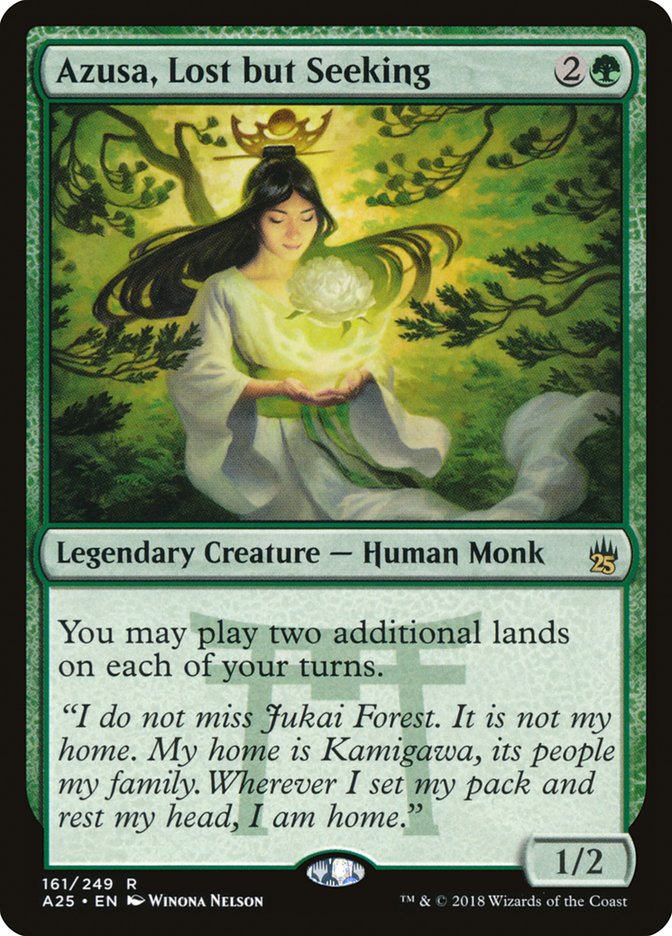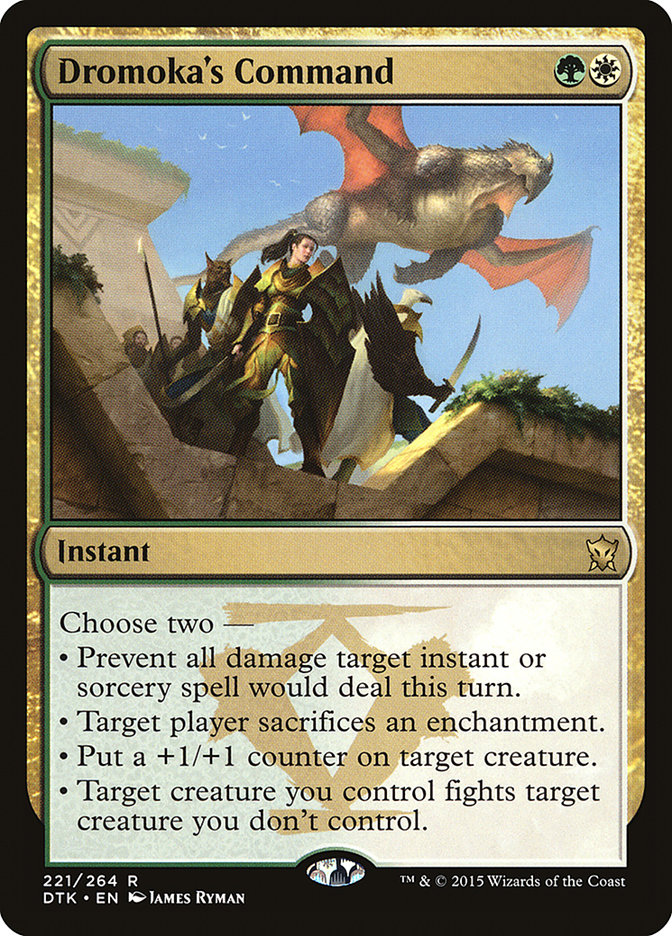Ten months ago, I wrote The Ultimate Guide to G/W Company to help people get into playing my favorite deck in Modern. Since then, the format has completely changed, from the introduction of Five-Color Humans, B/R Hollow One, and Teferi, Hero of Dominaria to the unbanning of Bloodbraid Elf and Jace, the Mind Sculptor. I’ve also continued to pilot G/W Company and have learned much more about the deck and its place in the overall Modern metagame.
I’ve written little else about G/W Company since then, as I like to focus on bigger-picture items that many people will be interested in. However, the most common thing people ask me about is a new primer for G/W Company, so I think this is the perfect time to write a large, two-part guide on everything you need to know about G/W Company leading up into #SCGCON and #GPVEGAS. Part 1 of the guide will be all about the maindeck, with Part 2 covering everything you need to know about the sideboard and different options.
What Is G/W Company?
Even though I’m tweaking the decklist each weekend to keep up with the expected metagame, this decklist is my most current of G/W Company and the one I’d register for the #SCGINVI if it started today (which it does!).
Creatures (28)
- 1 Azusa, Lost but Seeking
- 4 Birds of Paradise
- 4 Noble Hierarch
- 4 Knight of the Reliquary
- 1 Scavenging Ooze
- 4 Voice of Resurgence
- 4 Courser of Kruphix
- 1 Archangel Avacyn
- 3 Tireless Tracker
- 2 Ramunap Excavator
Lands (23)
Spells (9)

Why Play G/W Company?
G/W Company is an incredibly misunderstood deck. A popular opinion is that it’s too fair and underpowered to compete in Modern, a format where an incredible number of different linear decks exist. I don’t believe this is true in the slightest, as the power that G/W Company has isn’t evident on the surface and may be difficult to understand, but is certainly present for a few different reasons:
1. Controlling Your Own Draw Step.
This is G/W Company’s biggest hidden strength. The deck is almost entirely defensively oriented and wants the game to last as long as possible. This is because the knowledge of the top card of your library thanks to Courser of Kruphix, in addition to numerous ways to shuffle your library, ensures the quality of your own draw step will be much higher than that of your opponent’s draw step over time.
While your opponent draws three lands out of five cards in the late-game, G/W Company will be able to not only play lands off the top of the library with the help of Courser of Kruphix but also be able to shuffle their library over and over to look for specific cards. It’s not quite casting a free Vampiric Tutor every turn, but it’s not as far off as players may think. This is an advantage that no other deck in the format can use, and therefore many players will not understand the power of it at first glance.
2. Consistency.
Anyone who has played a fifteen-round Modern tournament knows that throughout it there are plenty of games where one deck has failed to put up much of a fight. This may be from troubles with the colors in the manabase, not drawing any of a certain key type of card, or mulliganing down to oblivion because of poor opening hands. G/W Company is filled with mana creatures and fairly interchangeable two- and three-drops, and therefore the fail rate of the deck is incredibly low for Modern standards.
Many players only think about the ceiling of decks when they talk about how good the deck is, which is understandable because the ceiling of a deck is fun to dream about. But no one likes to talk about the floor of a deck, the hands that you don’t want to have but must keep. This is where G/W Company shines throughout a fifteen-round tournament, as the floor of hands you’ll have is much higher than the average Modern deck.
It’s more fun to think about how “This deck’s best openers are busted!” than “This deck’s poor openers can still be very competitive against an opponent’s average opener.” But the win column only shows who wins. Margins don’t matter.
3. An Amazing Sideboard.
The sideboard is another part of a deck that is often overlooked when decks are talked about, but most games played in Magic are with your sideboard. This oversight is completely understandable, as judging a deck by its maindeck is certainly a much easier proposition than determining what the deck will look like in sideboard matches against a field that’s as vast as Modern.
With most decks that you’ll face in Modern being some variation of a linear deck, G/W Company can modify its gameplan to shut down what the opponent is trying to do after sideboarding. I’ll be writing all about sideboarding in Part 2 next week, including why I build the sideboard the way I do as well as what’s important in each matchup.
The power behind G/W Company is not as easy to realize right away compared to other Modern decks, which means players underestimate its true strength. This, again, is completely understandable as it’s not flashy and is doing something completely different from any other deck in the format. Hopefully you understand the power behind the deck a little better now, though, and to further help explain it, I’ll talk about every part of the maindeck.
The Manabase
I have played the exact same manabase in G/W Company for over a year now, but that doesn’t mean I haven’t been experimenting in Leagues on Magic Online with other options. I still keep coming back to this same manabase, though, and am completely comfortable with it. Let’s talk about some of the specifics.
Not counting Archangel Avacyn, which is a current metagame call and not a core part of the deck in the slightest, there aren’t any double-white cards in the deck. There’s also a very large demand for green mana early with the deck with a slighter demand on white mana. Therefore, many players are surprised I only play two Plains, and they often cut the second one, thinking it’s the worst land in the deck (spoiler: it’s not).
This cut can lead to people playing a sixth basic Forest, an eighth fetchland, or even a maindeck Bojuka Bog. My one desire with the manabase would be to have another green source, so that’s not a change I mind as much, but I still believe in the second Plains. When activating Knight of the Reliquary, the Plains is the first land to get sacrificed almost every time to upgrade to a different land. Then, if I need another white source later, I want another Plains to find if it’s necessary.
Every life point is incredibly vital with this deck, a reoccurring theme I reference often. Therefore, getting basic lands with the fetchlands is almost always the priority, as taking an extra two damage from a shockland can be the difference between winning and losing. Playing one Plains will certainly result in having to pay extra life for a white source more often, which will end up costing the deck more games than only playing sixteen green sources in my experience.
With the life total being an incredibly valuable resource in G/W Company, playing two Horizon Canopies certainly has a price. I understand the logic behind only playing one and having another Forest or green fetchland in the deck, but Horizon Canopy is simply too good with both Knight of the Reliquary and Ramunap Excavator for me to want to only play one.
Also, when you have Courser of Kruphix on the battlefield and know the top card of your library, there are plenty of times where you’ll want to draw the top card with a Horizon Canopy before activating fetchlands and casting other spells. The most common time this comes up is when there’s a Path to Exile on top of the library that you’ll want to have access to later in the game, since G/W Company isn’t flush with removal spells.
The actual worst land in the deck is the second Temple Garden, as taking two damage is such a downside for the deck. It’s incredibly rare that you’ll want to Shock yourself twice in the same game, so having access to a second shockland to fetch is rarely a necessity. I try to find any excuse to place a Temple Garden onto the battlefield tapped when playing it. With the value of basic lands being incredibly high in G/W Company, I have long thought about playing a sixth Forest over the second Temple Garden, and it’s something I’ll continue testing.
Windswept Heath is the best fetchland and should absolutely be a four-of. The other three, or potentially four, slots just need to be green fetchlands. Honestly, the best strategy is to play one each of Wooded Foothills, Misty Rainforest, and Verdant Catacombs, but I just really like the Onslaught border and therefore play three Wooded Foothills.
The reason why it’s correct to vary your fetchlands is because it’s possible your opponent casts a Sorcerous Spyglass, sees you have two or three Wooded Foothills in hand, and proceeds to name it to leave them ineffective. This hasn’t ever come up yet, and I’ve probably played around a thousand matches with the deck by now, but it could and it’s good to be ready for weird scenarios.
Ghost Quarter is the land that makes the deck what it is. When G/W Company accomplishes its goal of getting to the late game to have a higher quality draw step than the opponent, Ghost Quarter is often the card that puts the game away when paired with Ramunap Excavator to destroy the opponent’s entire manabase.
But that’s just the tip of the iceberg when it comes to Ghost Quarter, as it plays a much more prominent role in the deck. It may be surprising for some people, but I activate Ghost Quarter on myself more than my opponents throughout a tournament. It’s usually only when I get very late into the game that I start activating Ghost Quarter on my opponent’s lands, unless they’re strained on a certain color of mana or have creature-lands on the battlefield.
Here are a few tips and tricks with using Ghost Quarter.
Controlling your draw step: Remember how I mentioned the power of G/W Company is your ability to control your draw step? Ghost Quartering yourself is another way to shuffle the library if you need to change the card on top of it.
Hurting your opponent’s draw step: There are times when your control opponent is stumbling, they’ve left two cards on top of their library with Serum Visions, and you’ll want to use an extra Ghost Quarter to make them shuffle, but that doesn’t happen often.
A more relevant line of play these days involves Search for Azcanta, given its popularity. During the upkeep of a player who controls Search for Azcanta, after they keep the card on top with Search for Azcanta and transform it into Azcanta, the Sunken Ruin, I love to Ghost Quarter their Azcanta, the Sunken Ruin to not only destroy the powerful land but shuffle away the card that wanted to keep. This is a play I’ll try to make every time a Search for Azcanta is transformed, even if they didn’t leave the card on top, because destroying Azcanta, the Sunken Ruin is critical and doing it during their upkeep means they have the least amount of information for when or if they want to activate it.
Gaining life: Again, every point of life matters when playing G/W Company and that’s especially true in some matchups like Burn. When I know I’ll be in a close race to barely stay alive before stabilizing, I’ll often use Knight of the Reliquary to get a Ghost Quarter when Courser of Kruphix is on the battlefield and then Ghost Quarter my own land to gain an extra life. When you have those two cards on the battlefield, remember that you can always gain two life at instant speed with this trick and even more life when you have multiple Coursers.
Growing Knight of the Reliquary: This is a big one. The ability to Ghost Quarter yourself means that Knight of the Reliquary is a larger creature than your opponent may realize. This could mean that when you’re attacking, you may need to Ghost Quarter yourself to give an unblocked Knight of the Reliquary the extra two power to shorten the clock by a turn.
More commonly, though, when you’re stabilizing the battlefield, you can activate Knight of the Reliquary a couple times to find Ghost Quarters, so that when you start attacking with Knight, it will be incredibly difficult for your opponent to block it profitably. This is especially true when you have an active Knight of the Reliquary on the battlefield when attacking with another because of the ability to grow it at instant speed. It doesn’t take long to get Knight of the Reliquary big enough to be a lethal attacker and put your opponent into The Abyss.
When blocking with an active Knight of the Reliquary, it always has three more power and toughness than whatever it currently has because of the ability to sacrifice a land, search for a Ghost Quarter, and then Ghost Quarter your own land. I have had countless opponents attack their 5/5 into my 3/3 Knight of the Reliquary, thinking they would trade, only to see their creature get eaten in combat.
Finally, protecting your Knight of the Reliquary from Lightning Bolt is incredibly important, thanks to Lightning Bolt being one of the most-played cards in Modern, and Ghost Quarter is an easy way to do it. If you have no lands in the graveyard and are playing against Jeskai Control, for example, you’ll want to wait until you have four mana before deploying Knight of the Reliquary, holding up the Ghost Quarter activation on yourself in case your opponent decides to Bolt the Knight.
There are two other, very similar lands to Ghost Quarter that I don’t use in the deck, and I want to briefly mention why. Field of Ruin is a very similar card to Ghost Quarter and has supplanted it in many control decks in Modern, but it’s a much worse option for G/W Company. First, the two-mana activation cost is prohibitive in this deck, which wants to be able to use it right away after finding it with Knight of the Reliquary or returning it to the battlefield with Ramunap Excavator. Second, it does a much worse job at growing Knight of the Reliquary than Ghost Quarter does, which, from what I mentioned earlier, is critical. Finally, Field of Ruin can’t destroy the opponent’s basic lands, which is crucial.
Tectonic Edge is a better option for G/W Company than Field of Ruin but still gets edged out of the maindeck by Ghost Quarter. Destroying opponents’ lands without allowing them to search their library is certainly desirable, and Tectonic Edge even has the ability to destroy your own land to grow Knight of the Reliquary at the same rate Ghost Quarter does. However, it’s much worse to destroy your land with Tectonic Edge, as it won’t replace itself with a basic land. Tectonic Edge also can’t destroy your opponent’s basic lands, and it can’t even be activated unless your opponent has four lands on the battlefield, which is enough reason for me to leave it on the bench as well.
The Creatures
The mana creatures are absolutely critical to the deck, and I’m at the point where I’ll never register less than eight copies for the foreseeable future. I’ve tested out having a ninth mana creature, a Llanowar Elves, many times, but I believe eight to be the best number as of now. These cards are the absolute most important cards to see in your opening hand and are the biggest determining factor, besides the lands in hand of course, if I’ll keep my hand or not.
Voice of Resurgence plays defense with the best of them, a quality that G/W Company is certainly in search of. For me to keep any hand without a mana creature in it, there must be a two-drop and Voice of Resurgence is the best one to play on the second turn of the game. It’s also critical in fighting the rise of Jeskai decks; they desperately want to play the game on your turn, something Voice of Resurgence shuts down. I have mostly played four copies of Voice of Resurgence because of how good it is on Turn 2 when compared to Scavenging Ooze, but shaving one for another Scavenging Ooze could certainly be the right call depending on the metagame.
Even though it isn’t a strong play on the second turn of the game, Scavenging Ooze is too good of a card to not at least play a single copy. It’s particularly strong against U/R Gifts Storm, B/R Hollow One, and Mardu Pyromancer compared to Voice of Resurgence, so if those are decks that are popular in your metagame, add another Scavenging Ooze or two to your maindeck. Even though it’s effective against Snapcaster Mage and Tarmogoyf, it isn’t as reliable against Jeskai Control and Jund as Voice of Resurgence due to its fragility.
These two cards are the heart and soul of G/W Company and I would play more than four of either of these cards if I could.
Let’s start with Courser of Kruphix, the card that allows you to know the top card of your library in order to make informed decisions on when to shuffle your library. It also allows you to play lands from the top of your library to help ensure you always draw spells, while each land drop gains a life. I’ve mentioned before how every point of life is vital in G/W Company, since it’s a defensive deck, and this is just another reason why Courser of Kruphix is vital to the strategy.
The extra land drops can help Tireless Tracker create Clues, give you mana for Gavony Township, crack Horizon Canopy, or simply allow yourself to Ghost Quarter yourself and not fall too far behind in mana. Even though Courser of Kruphix doesn’t have reach in the traditional sense, most of the time your best option of beating flying attackers like Mantis Rider is to gain life at the same pace that you’re taking damage. For an example of how impactful the lifegain from Courser of Kruphix is, watch this Game 1 against Humans from a few weeks ago:
Even after playing the deck for so long, there are a couple of decisions I wish I had made differently in this game, which is similar to almost any game I play. There are dozens if not hundreds of decisions to make each game when playing G/W Company, and you don’t have infinite time, so sometimes you’ll make the wrong decision. There’s nothing wrong with that; in a game of Magic, the objective is to win and not make only perfect decisions. Always try to learn and get better for the next time.
Knight of the Reliquary, on the other hand, is simply one of the individually best creatures in all of Modern and is even better when paired with Courser of Kruphix. It’s very rare that the best thing to do with Knight of the Reliquary is to attack your opponent, considering the goal of the deck is to stay alive, and that scenario doesn’t usually come up as the one to take until you’ve activated Knight a couple of times. It’s also one of your best blockers, something you’ll want to take full advantage of before activating the Knight on your opponent’s end step.
The most common card to get when activating Knight for the first time in a game is a fetchland. It’s the best way to shuffle the library when a Courser of Kruphix is on the battlefield while preserving the amount of lands you have, it creates two Clues for a Tireless Tracker, and it puts another land into the graveyard for Knight or Ramunap Excavator. It even gets two lands out of your deck, which in turn makes both your Collected Companies and your draw steps slightly better.
Gavony Township isn’t a land I like to get until the late-game and usually only when I have a Birds of Paradise that I would like to start attacking in the air with. I mentioned other in combat tricks with Knight of the Reliquary and Ghost Quarter in the Ghost Quarter section previously, so please refer to that if you want more ways to use Knight.
Tireless Tracker is the “Plan B” for the deck for when Courser of Kruphix and Knight of the Reliquary aren’t doing their thing, but it also works incredibly well with the other two. The Clues it creates can generate an amount of card advantage that snowballs out of control and takes over the game. Having the ability to sacrifice the Clues at instant speed is also critical when you know the top card of your library because it allows you to draw important cards like Path to Exile or Collected Company before you shuffle them away or cast another Collected Company that would place them at the bottom of your library. A common play when you have Knight of the Reliquary, Courser of Kruphix, and Tireless Tracker together is to activate Knight, find a fetchland and get a Clue token, and then look at the top card of the library to see if you want to draw it with the Clue token or shuffle it away and get another Clue.
I have previously tried an Eternal Witness in one of the Tireless Tracker slots, but Tireless Tracker is too important in the games where your opening hand is poor and you need to catch back up or you flood out and run out of things to do early. Eternal Witness is an amazing hit off Collected Company, but there are too many times where you’ll have a hand that consists of mana creatures, Voice of Resurgence, and Eternal Witness and not be able to gain any traction, whereas Tireless Tracker would dig further into your deck. The only reason why I don’t have four Tireless Trackers in the deck is because it isn’t a good defensive card early in the game, which, again, is extremely valuable for G/W Company.
These two creatures occupy flex slots in the deckm but I’ve been happy playing two copies of Ramunap Excavator and one copy of Azusa, Lost but Seeking for months now. They both suffer from the same weakness, being a three-drop that dies to Lightning Bolt, which is a tough sell in Modern, but they’re so powerful that I believe it’s worth it to play them.
Ramunap Excavator has the ability to replace itself when it enters the battlefield as long as you have a land in your graveyard, so it has a relatively high floor. The ability to continually play lands is critical for gaining life with Courser of Kruphix and destroying your opponent’s manabase with Ghost Quarter, and the only way to do that is Ramunap Excavator. It’s also a critical card at fighting many big mana and combo decks where attacking their manabase is the way to win, and all of these factors lead me to believe Ramunap Excavator is too good not to play.
Azusa, Lost but Seeking is a much more polarizing card. It generally doesn’t do anything except when you have Ramunap Excavator or Courser of Kruphix, which means the floor on the card is incredibly low. There are certainly times where you’ll play it and it does absolutely nothing, which may cost you the game, but whenever you have it on the battlefield with Ramunap Excavator or Courser of Kruphix, the ability to play three lands a turn transforms the deck into something completely unfair. Taking over a game is exactly what you want a one-of in a decklist to do, and that’s exactly what Azusa, Lost but Seeking can do.
I’m currently playing Archangel Avacyn in my maindeck because of the popularity of Humans and Jeskai Control, and those are the two best matchups for it. It’s not a card that I expect to have in my maindeck often, but it’s just that good against Mantis Rider and Supreme Verdict, two vital cards to beat right now. It’s also very good against Mardu Pyromancer and B/R Hollow One as an added bonus. There are plenty of matchups that I wouldn’t want Archangel Avacyn in against and therefore it gets sideboarded out quite often, but for now I want it against the two most popular decks in the format.
The Spells
These two spells should never be less than four-ofs, plain and simple. Path to Exile is arguably the best removal spell in Modern and only a control-dominated format could keep it from being maxed out in the deck. Collected Company is the namesake of the deck and is the main card that turns G/W Company from a good Standard deck into a good Modern deck.
This is another flex slot in the deck, one that has been occupied by Worship recently. I moved to Dromoka’s Command because it’s also good against the creature decks in Modern as a fifth removal spell, yet isn’t a dead card against Jeskai Control (whereas Worship is). The main reason I’m currently playing Dromoka’s Command is because of Meddling Mage, which often names Path to Exile. It’s also nice to have a maindeck answer to Blood Moon, which is problematic for the deck, since it shuts off our ability to shuffle. However, if Humans recedes in popularity, then I’ll remove Dromoka’s Command from the deck. It’s not a card I like to have in the sideboard, and I would rather play it maindeck or not at all.
Sequencing Tips
1. Which one-drop do I cast on Turn 1?
Birds of Paradise is a better Turn 1 play than Noble Hierarch when you have both in your opening hand, with one exception. If you know you’ll be facing attacking creatures in the air that you’ll likely have to chump block to stay alive, casting Noble Hierarch first is the correct move. Other times you want to lead with the Birds of Paradise because Noble Hierarch is a stronger card to have around in the late-game due to having exalted. Opponents will frequently kill your Turn 1 mana creature, and it’s better for that to be the Bird than the Human. Also, when casting a Birds of Paradise on Turn 1, it gives you a much better chance of attacking safely on Turn 2 in the air if you choose to deploy the Noble Hierarch on Turn 2.
2. Which three-drop do I cast first?
Leading with Knight of the Reliquary is the best, since it makes your other three-drops better if you’re able to untap with it. However, you really don’t want to lose Knight of the Reliquary to a Lightning Bolt since it is so valuable. I mentioned a trick about keeping it alive with Ghost Quarter earlier and I’ll talk about how to use fetchlands in a little bit. The other three-drops are best cast before your land drop for the turn, as they all generate value from the land drop. If you don’t have a Knight of the Reliquary, then it’s usually best to lead with Courser of Kruphix, since you’re more likely to untap with it than the other options and it also plays defense the best.
3. How do I use fetchlands with this deck?
Usually it’s best to save fetchlands for as long as possible to be able to get multiple Clues off Tireless Tracker or to reset the top of your library when you have a Courser of Kruphix. Courser also negates the usual life loss a fetchland requires. However, because of the presence of Knight of the Reliquary, there’s an exception to waiting to use the fetchlands. Like I mentioned before, it’s vital that Knight of the Reliquary doesn’t trade with a Lightning Bolt, and therefore I’ll often play a fetchland Turn 1 on the play with a mana creature over a Forest if I believe there’s a chance I could be casting a 4/4 Knight of the Reliquary on Turn 2.
When activating a fetchland and searching your library, you should almost always get a basic land because of how detrimental costing yourself two life is. The exceptions are when you’re playing against a control deck, especially if they have Path to Exile, or if you don’t have another colored mana source in your hand. Later in the game, you need to be cognizant of how many basics are left in your deck to leave one or two in case you want to Ghost Quarter yourself. Any time you have the chance to activate the fetchland and you don’t have use for the mana, always get a Temple Garden tapped.
Mulliganing
Game 1: The most important card to look for in an opening hand, besides a green source, is a mana creature. Almost any hand that has two lands and a mana creature is going to be a keep, with the only exception being if the only cards in the hand are mana creatures and lands. If you don’t have a mana creature, then you need to at least have a two-drop, preferably Voice of Resurgence, to even consider keeping. A “Voice of Resurgence for first spell” hand also needs to have the impact spells – Path to Exile or Collected Company – to be keepable.
If you have a seven-card hand that has nothing but three-drops and Collected Companies, mulligan. That hand, with a Collected Company, is okay to keep on six on the draw, since five-card hands are generally weak and having a scry can help you find a mana creature. There are many decks that G/W Company struggles against Game 1, so it’s okay to keep a hand, especially after mulliganing, that is weak to the faster decks of the format but has strength against the interactive decks while hoping that your opponent is on a winnable matchup.
Games 2 and 3: As I’ll discuss in greater detail in Part 2 of this primer, the sideboard is filled with specific, important answers. This means you need to be much more aggressive in your mulliganing decisions. A pile of value creatures won’t fare up well in some matchups, so don’t be afraid to go down to five against linear decks. Also, the importance of mana creatures is even greater against combo and big mana decks.
Moving to Value Town
With the entire maindeck covered, Part 2 of this guide will cover everything you need to know about the sideboard like how to sideboard in different matchups, what cards to play in what metagames, and why I have the sideboard built the way I do. For now, hopefully you have a better understanding of the power of G/W Company and why I think it’s one of the best deck choices in Modern.
Playing defensively in Modern is never easy, but G/W Company does it with the best of them.


